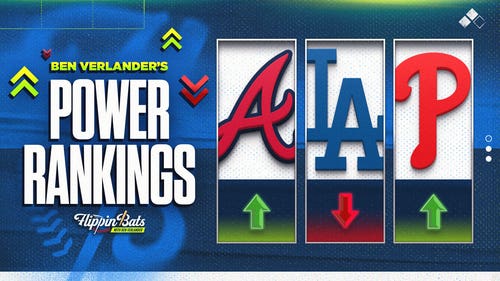





































































































































Baseball needs a plan for parity
In the bad old days, the clock to the next labor showdown already would be ticking. Twenty months from the expiration of the current deal, the two sides would be engaged in preliminary saber rattling, laying groundwork for yet another ugly dispute.
Those days mercifully are gone. A work stoppage before the 2012 season is almost unthinkable. Yet, baseball cannot turn complacent, even as it generates record revenues in a battered economy.
If the new union leader, Michael Weiner, wants to leave his mark, he need not extract major concessions from his management counterpart, Rob Manfred. He need only work with Manfred to establish a blueprint for increased competitive balance in the new collective bargaining agreement.
Baseball already has come a long way since expanding revenue-sharing and introducing a luxury tax in the 2002 agreement. More work needs to be done — on the amateur draft, the conduct of low-revenue clubs and yes, realignment. But the sport no longer is fighting uphill.
In the seven seasons that followed, 24 of the 30 teams reached the postseason, 12 teams made the Series and six became champions.
That’s progress, and the game’s revamped economic system deserves at least part of the credit, if not a significant chunk.
The eight teams that failed to reach the postseason from ’02 to ’09 — the Blue Jays, Mariners, Orioles, Pirates, Rangers, Reds, Royals and Nationals/Expos — all were mismanaged and have only themselves to blame.
So, what’s next?
Not further increases in revenue sharing — the high-revenue teams are tired of funding certain low-revenue clubs that A) decline to spend the money they are given and B) cannot get out of their own way.
Noneconomic solutions are the answer, and baseball does not lack for possibilities.
The introduction of a worldwide draft and cap on draft-pick bonuses would better redistribute top amateur players to the teams that need them most. Fixing the draft is more complicated than it sounds, but Bud Selig says the issue is now a priority; the players and owners pushed it aside in previous negotiations to focus on economic issues.
Realignment, too, is complex — and controversial. Selig has long favored the idea, but he also favors an unbalanced schedule, the better to preserve rivalries. Such conflicts are inherent in virtually any realignment proposal; none will be perfect nor embraced by all. But, really, how difficult can this be?
Find a way to give lesser clubs a better chance to compete. Tweak the schedule if necessary. And expand the postseason to enable more teams to qualify.
Selig sometimes annoys fans by harping on the growth of the game during his tenure, a period that also includes his cancellation of the 1994 World Series due to a work stoppage and his presiding over the Steroid Era.
The bottom line, though, is that baseball is indeed in a remarkable place, a place that was inconceivable only 15 years ago, when the strike of 1994-95 left so many fans frustrated and even alienated from the sport.
Selig, in the twilight of his career, is in position to cement his legacy. He led the sport out of adversity. His final test is how he builds on success.

Giants place pitcher Blake Snell on 15-day injured list with left adductor strain

Three reasons why Cubs' Shōta Imanaga might be biggest steal from free agency

Dodgers manager Dave Roberts working with Shohei Ohtani on strike zone discipline

DJ LeMahieu leaves 1st minor league rehab game in 2nd inning with sore right foot

2024 MLB Power Rankings: Who deserves No. 1 spot as Dodgers tumble?

20 Best pitchers in MLB 2024: Ranking the top 20 starters

MLB progress report: 1 early flaw with each of baseball's best teams

2024 World Series odds: Dodgers, Braves still at the top; Orioles rising


Giants place pitcher Blake Snell on 15-day injured list with left adductor strain

Three reasons why Cubs' Shōta Imanaga might be biggest steal from free agency

Dodgers manager Dave Roberts working with Shohei Ohtani on strike zone discipline

DJ LeMahieu leaves 1st minor league rehab game in 2nd inning with sore right foot

2024 MLB Power Rankings: Who deserves No. 1 spot as Dodgers tumble?

20 Best pitchers in MLB 2024: Ranking the top 20 starters

MLB progress report: 1 early flaw with each of baseball's best teams

2024 World Series odds: Dodgers, Braves still at the top; Orioles rising
